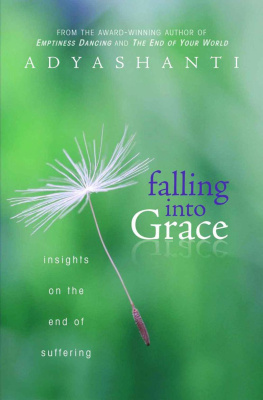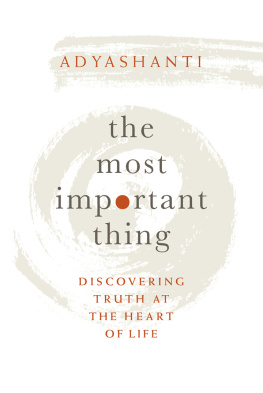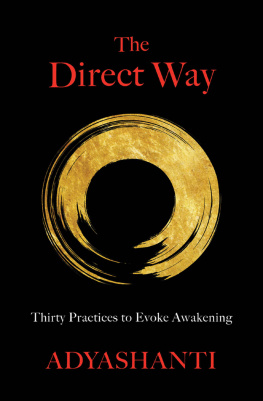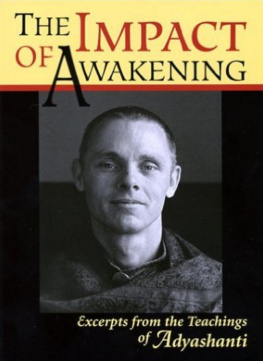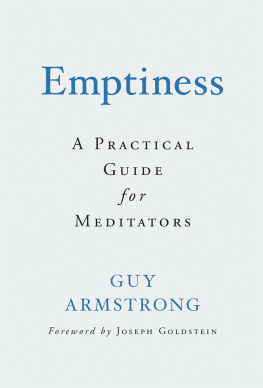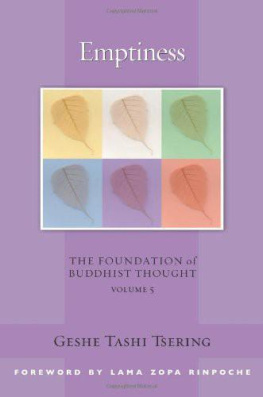Adyashanti - Emptiness Dancing
Here you can read online Adyashanti - Emptiness Dancing full text of the book (entire story) in english for free. Download pdf and epub, get meaning, cover and reviews about this ebook. year: 2006, publisher: Sounds True, genre: Religion. Description of the work, (preface) as well as reviews are available. Best literature library LitArk.com created for fans of good reading and offers a wide selection of genres:
Romance novel
Science fiction
Adventure
Detective
Science
History
Home and family
Prose
Art
Politics
Computer
Non-fiction
Religion
Business
Children
Humor
Choose a favorite category and find really read worthwhile books. Enjoy immersion in the world of imagination, feel the emotions of the characters or learn something new for yourself, make an fascinating discovery.
- Book:Emptiness Dancing
- Author:
- Publisher:Sounds True
- Genre:
- Year:2006
- Rating:3 / 5
- Favourites:Add to favourites
- Your mark:
Emptiness Dancing: summary, description and annotation
We offer to read an annotation, description, summary or preface (depends on what the author of the book "Emptiness Dancing" wrote himself). If you haven't found the necessary information about the book — write in the comments, we will try to find it.
Who are you when you are not thinking yourself into existence? What is ultimately behind the set of eyes reading these words? In Emptiness Dancing, Adyashanti invites you to wake up to the essence of what you are, through the natural and spontaneous opening of the mind, heart, and body that holds the secret to happiness and liberation.
From the first stages of realization to its evolutionary implications, Adyashanti shares a treasure trove of insights into the challenges of the inner life, offering lucid, down-to-earth advice on topics ranging from the ego, illusion, and spiritual addiction to compassion, letting go, the eternal now, and more. Whether you read each chapter in succession or begin on any page you feel inspired to turn to, you will find in Adyashantis wisdom an understanding and ever-ready guide to the full wonder of your infinite self-nature.
Contents
- Awakening
- Satsang
- Openness
- Innocence
- Harmonization
- Freedom
- The Radiant Core
- Silence
- Conciousness
- Depth
- Ego
- Love
- Spiritual Addiction
- Illusion
- Control
- Letting Go
- Compassion
- Fire of Truth
- Enlightenment
- Implications
- Dharmic Relationship
- Fidelity
Excerpt
The aim of my teaching is enlightenmentawakening from the dream state of separateness to the reality of the One. In short, my teaching is focused on realizing what you are. You may find other elements in my teaching that simply arise as a response to peoples particular needs of the moment, but fundamentally Im only interested in you waking up.
Enlightenment means waking up to what you truly are and then being that. Realize and be, realize and be. Realization alone is not enough. The completion of Self-realization is to be, act, do, and express what you realize. This is a very deep matter, a whole new way of lifeliving in and as reality instead of living out the programmed ideas, beliefs, and impulses of your dreaming mind.
The trust is that you already are what you are seeking. You are looking for God with his eyes. This truth is so simple and shocking, so radical and taboo that it is easy to miss among your flurry of seeking. You may have heard what I am saying in the past and you may even believe it, but my question is, have you realized it with your whole being? Are you living it?
My speaking is meant to shake you awake, not to tell you how to dream better. You know how to dream better. Depending on what you mental and emotional state at the time is, I may be very gentle and soft with you, or not so gentle and soft. You may feel better after talking with me, but that is incidental to awakening. Wake up! You are all living Buddhas. You are the divine emptiness, the infinite nothing. This I know because I am what you are, and you are what I am. Let go of all ideas and images in your mind, they come and go and arent even generated by you. So why pay so much attention to your imagination when reality is for the realizing right now?
Adyashanti: author's other books
Who wrote Emptiness Dancing? Find out the surname, the name of the author of the book and a list of all author's works by series.


